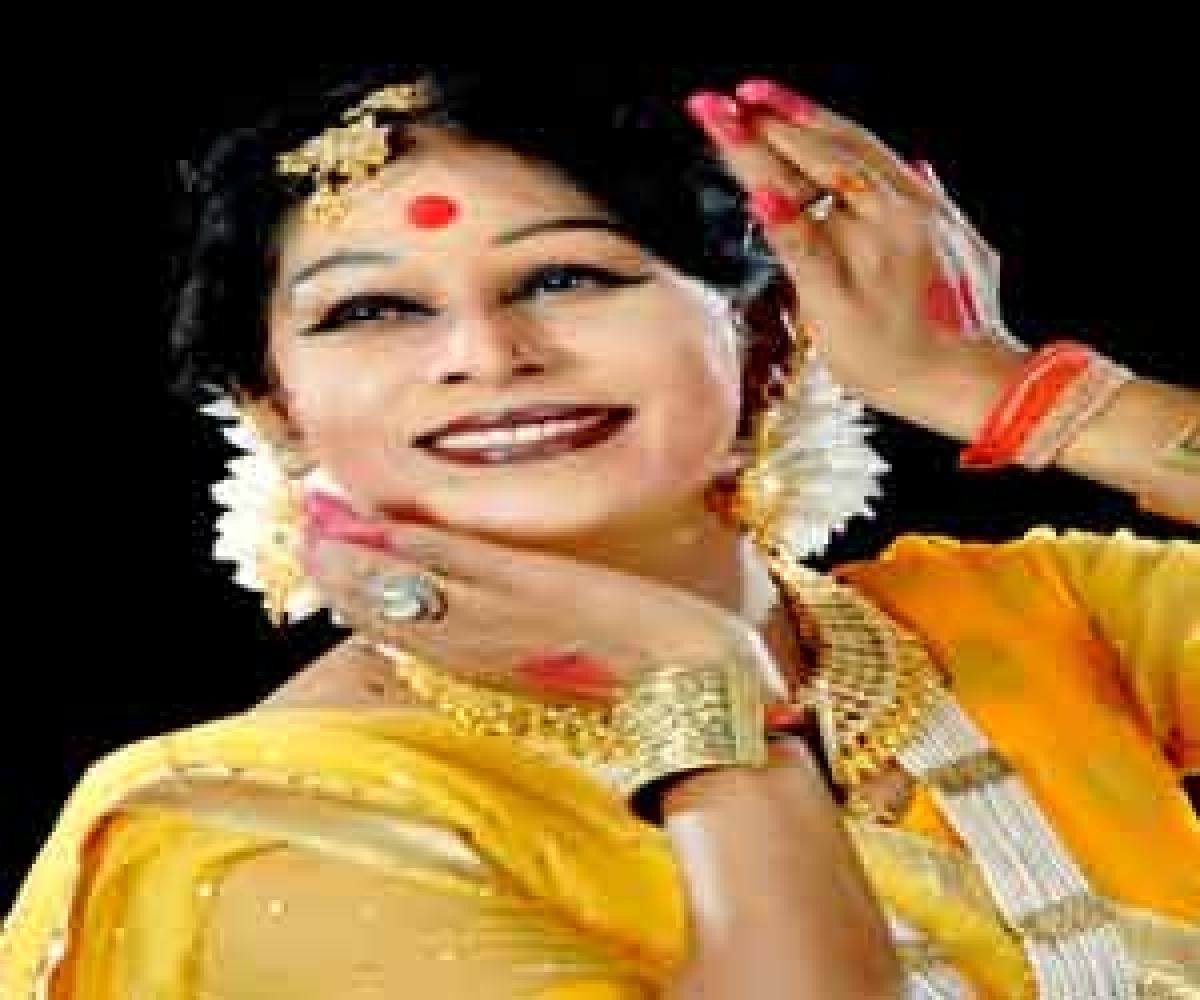Live
- Goa Aces clinch Indian Racing League title
- Study finds how hormone therapy can reshape the skeleton
- High-street fashion players looking at India for manufacturing: Report
- Shreyas Iyer to lead Mumbai as Prithvi Shaw returns for Syed Mushtaq Ali Trophy
- 'Failed to resolve crisis': NPP withdraws support from BJP govt in Manipur
- Chennai: Actress Kasturi Remanded in Custody Until 29th of This Month
- Aaqib Javed likely to become Pakistan's new white-ball head coach
- BJP panel to draft poll charge sheet against AAP govt in Delhi
- Allu Arjun Thanks Fans in Patna, Teases 'Pushpa 2' Release
- Japan to strengthen measures against illegal part-time jobs
Just In

Renowned Kathak dancer Shovana Narayan recently gave an enthralling performance, which left the audience mesmerised in Hyderabad at a programme titled ‘Wisdom and Compassion - The Way of the Buddha’ conducted by World Buddhist Culture Trust.
Renowned Kathak dancer Shovana Narayan recently gave an enthralling performance, which left the audience mesmerised in Hyderabad at a programme titled ‘Wisdom and Compassion - The Way of the Buddha’ conducted by World Buddhist Culture Trust.
The Padma Shri awardee says that she was initiated into dance at a very young age in Kolkata by Sadhana Bose, the grand-daughter of social reformer Keshav Chandra Sen and also a relative of well-known singer Naina Devi.
“Initially, I learnt to dance from Guru Kundan Lal in Mumbai and later I was fortunate to take ‘talim’ from Pandit Birju Maharaj. In those days, Panditji was very particular about every ‘nitty gritty’ of dance movements.
He would be very detailed in his teaching and was a task master about how to bend, where not to bend, facial expressions and every movement. On holidays, he would visit my home and there used to be continuous practice sessions from morning 10 am to evening 5 pm.
Time would just flow away and I would never feel tired. It was the learning of the ‘Ethos or the Atma’ of dance,” Shovana recalls.
Recalling her visit to the Kathak village the danseuse says, “Many years back after my performance in Bodh Gaya, a journalist came to me and asked me if I knew about the ‘Kathak Gaon’ or ‘Kathak village’ near Gaya.
It was actually a total surprise for me and I could not think much about it but the same was always in my mind for a long time. During my next visit, I decided to visit the place and heard people talking about the community of ‘Kathakars’ who were there from 700 years but vanished over a period of time.
This made me meet some government officials to check the land holding and Census records. To my surprise, there were indeed official records which mention the existence of the ‘Kathakars’ in about eight villages and the last trace was about 70 years ago. It was not an easy task visiting these interior villages as there was a security threat and we were warned to be careful.
Any enquiry had to be very carefully made and all our interactions with the villagers had to be substantiated with an introduction that I myself was a performer. We were told that there were men who used to sing and dance in the nearby temples. It proves that Kathak had a very long history in our country.”
Shovana always had a wonderful collaboration with flamenco dancers and she had her first interaction with a flamenco dancer, who was from Grenada. “He told me that their forefathers had roots in Western India.
It was very interesting to collaborate since we never understood each other’s language. The only method of communication was ‘DANCE’. The rhythmic syllables which invariably would be in common beats and this proved that there is always a common bond that unites art of the world.
It’s very important that we introduce art and culture to the younger generation. Many of them take it up seriously; once they know about the finer aspects, it can help them in life.”
The Kathak dance states that today, there is a strong impression that ‘popular art’ is more supported by the private sector, public sector, and the media.
There is a need to sit together and try to bring some correction in this policy so that even classical art and folk art can get equal patronage. “I would like to caution all youngsters that there is no shortcut to success.
One must be devoted and ethical in approach and go into the depth with constant ‘Sadhana’. One has to put in many hours of perspiration and dedication to achieve a reasonable success in art,” Shovana signs off.

© 2024 Hyderabad Media House Limited/The Hans India. All rights reserved. Powered by hocalwire.com







